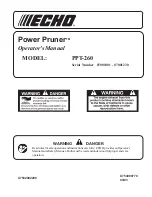
12
1. Switch Lock-OFF Release Buttons
– One of
these two buttons must be pressed before
the power switch can be pressed.
2. Power Switch
– The power switch used with
the “Lock-OFF” button energizes the unit.
3. Main Handle
– This handle contains the
power switch. Pulling this handle down low-
ers the blade into the workpiece.
4. Lower Blade Guard/Lower Guard Lip
– The
lower blade guard helps protect your hands
from the spinning blade. It retracts as the
blade is lowered. Lip can be used to raise
the lower guard in the event that the guard
becomes jammed on a workpiece.
5. Blade
– Use only 12" (305 mm) diameter
blades with 1" (25.4 mm) diameter arbor
holes.
6. Chip Deflector
– Deflects cut-off work-
pieces from entering the upper guard.
7. Upper Guard
– Covers upper portion of the
blade.
8. Sliding Fences
– Support for the workpiece.
The fences have a cast-in scale to make
repetitive cuts easy. The fences also have
holes to secure an auxiliary fences if desired.
9. Stationary Fence
– Stationary fence is
bolted to the base and will support the
workpiece when the sliding fence is re-
moved.
10.
Kerf Inserts
– Kerf inserts can be adjusted
to different blade widths to minimize
workpiece tear-out.
11. Miter Detent Override
– Allows detent ac-
Getting To Know Your Miter Saw
6
29
50
51
5
4
7
10
11
12
9
8
21
49
20
19
22
18
17
16
14
15
25
32
1
3
2
26
24
33
27
9
8
23
28
39
1609B06757.qxp_GCM18V-12GDC 3/25/20 12:35 PM Page 12













































